Asplenium nidus, the Bird’s Nest Fern hails from southern India but has become loved across the world as a stylish houseplant.
Houseplant lovers delight in the long, glossy frond-like leaves of this popular plant that can achieve luscious lengths of up to 2 feet (60 cm).
It’s welcome in many homes because of its well-documented air-purifying properties and even medicinal and culinary uses.
For most owners caring for a bird’s nest fern is a low-maintenance affair. With bright, indirect light, warmth, and a little humidity you should find it thrives.
However, there are pests and diseases that can wreak havoc with your bird’s nest fern and damage or even kill it.
In This Article – We share 10 birds’ nest fern problems and how to fix them for a healthy, happy plant!
Identifying and tacking common bird’s nest fern problems
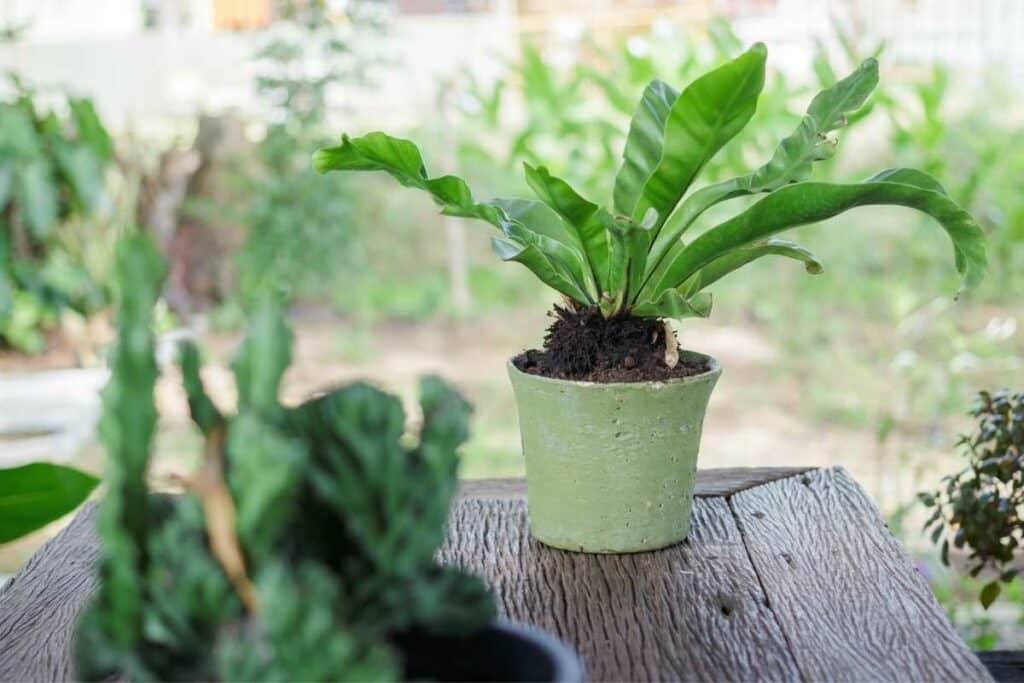
Seeing the glossy and front leaves of this delightful fern turn brown, yellow, or spotted is no fun.
However, by identifying common diseases and pests of the bird’s nest fern, you can tackle problems early and hopefully treat pests and diseases before they cause lasting damage.
Work through this list of 10 common bird’s nest fern problems.
1. Red spider mites
If your bird’s nest fern is losing growth and vigor, but you cannot see an obvious cause, you may deal with tiny sap-sucking arachnids called spider mites.
They’re a really common problem especially if your fern does not have the humidity it enjoys, and the environment dries out.
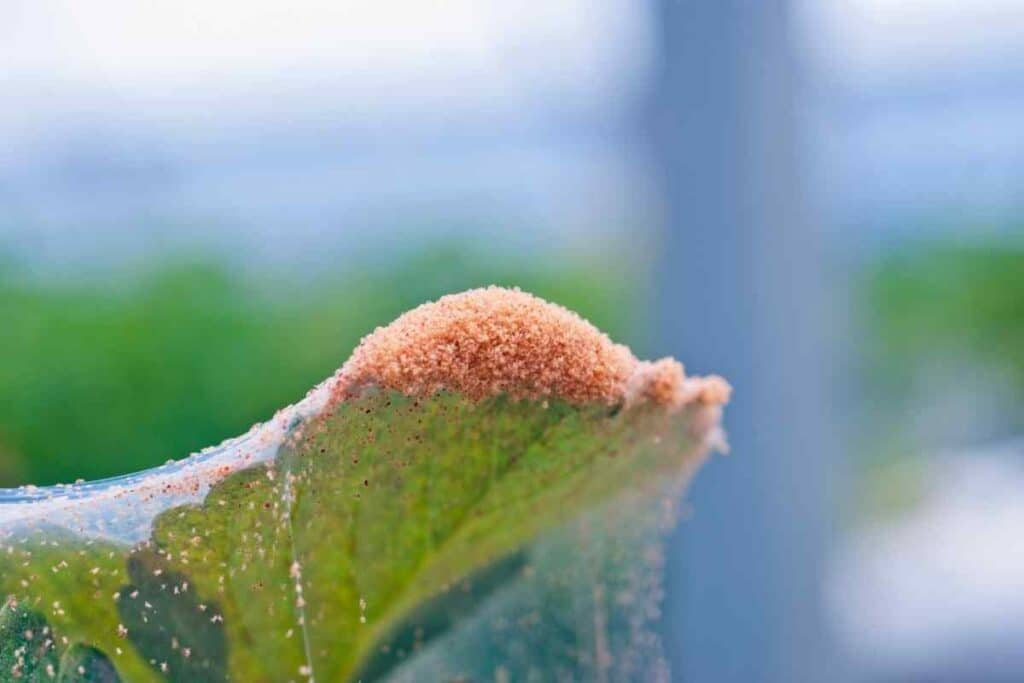
These mites hide out on the underside of the leaves.
They are sap suckers and have piercing-sucking mouthparts that penetrate the cuticle of the leave and suck the sugar-rich juices of the plant.
You’ll know these little mites are around by spotting the light speck-like scars from their feeding and the thin cobwebs on the plant.
How to tackle red spider mite on your bird’s nest fern
- Raise the humidity: Spider mites hate humidity and moisture, so you can deter them by regularly misting down your plant with water. Being a fern, your bird’s nest fern will love the added moisture too.
- Wash ‘em off: You can wash down the plant with mild soapy water and a soft cloth.
- Insecticidal soaps and oils can kill red spider mites and may be necessary if your infestation is severe.
2. Scale insects
Scale insects are another common sap-sucking pest of the bird’s nest fern and can be an extremely stubborn foe.
You’ll find them on the underside of the broad fern leaves or stems in clusters, with each insect measuring between 1mm and 1cm in length.
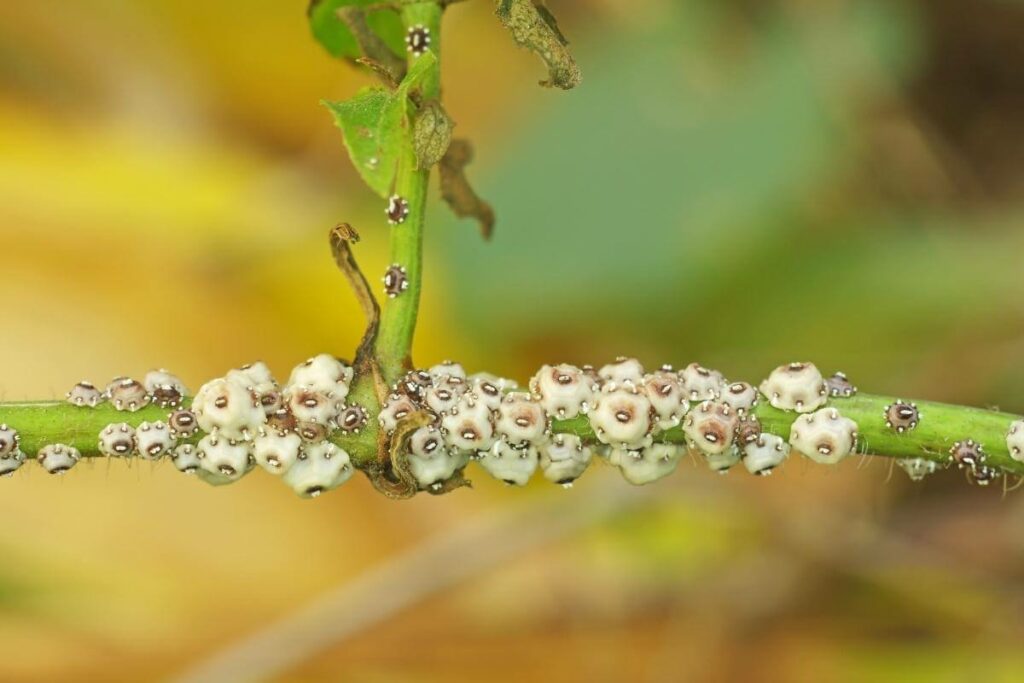
Scale insects are named because of their waxy white, grey, or tan shell.
As they feed and multiply on the plant, the fern foliage becomes discolored with stunted growth and a loss of vigor.
How to tackle scale insects on your bird’s nest fern
- Encourage natural predators if the fern is outside: Biological control with scale insect predators like ladybirds and parasitoid wasps can help bring the numbers of these critters down. Steinernema feltiae, a nematode, can also be purchased as a biological control of scale insects.
- Organic pesticide sprays: pyrethrum and fatty acid sprays can prove effective at reducing the number of scale insects on your bird’s nest fern. However, frequent reapplication of these treatments will help keep scale insects at bay.
- Direct application of non-organic pesticides and plant invigorators like lambda-cyhalothrin, flupyradifurone, or acetamiprid.
3. Shore flies
The warmth and humidity that bird’s nest fern enjoys make it a target for shore flies.
They are nuisance pests that look a little like fruit flies.
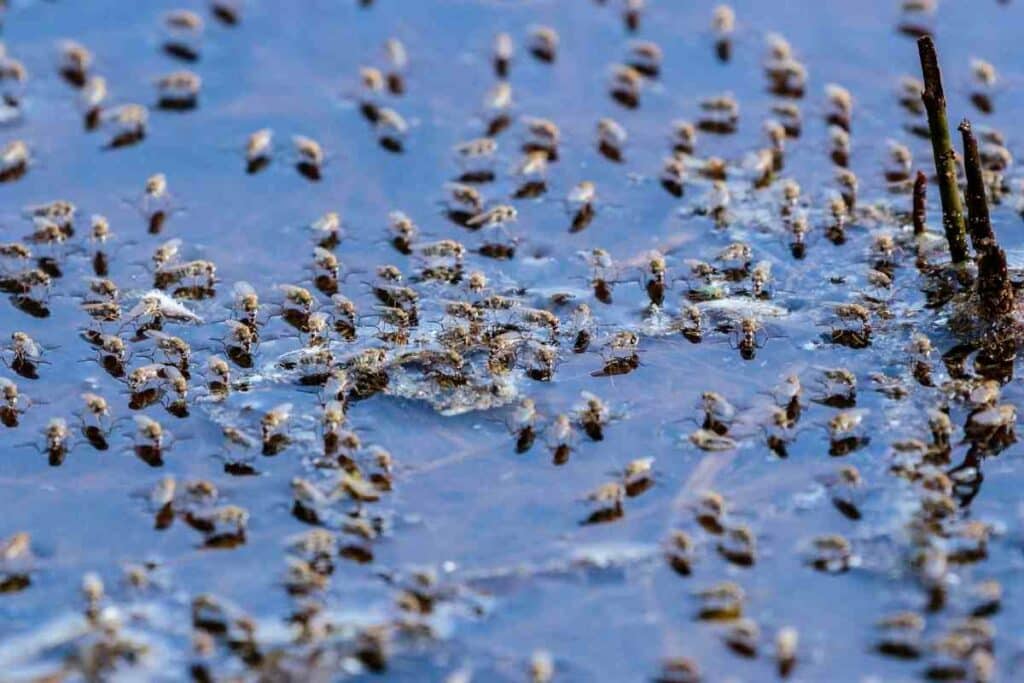
The most common way a plant becomes infected is by shore fly eggs in the soil of newly purchased plants that have not been quarantined.
They don’t want to attack the plant, they actually feed on algae in moist environments.
Adult flies cause fecal contamination on the leaves of the fern known as flyspeck, and may also introduce root diseases when they lay their eggs.
How to tackle shore flies on your bird’s nest fern
- Minimize the potential for breeding: moist, damp conditions cause this pest and the algae it feeds on to thrive. You may need to cut down on watering and limit fertilizer to create a hostile environment for the shore fly.
- Insecticides: these are the last resort for a persistent infestation. To eradicate this pest, you will need to use a larvicide and a pesticide to ensure that the reproductive cycle of this pest is broken.
4. Foliar Nematodes
Foliar nematodes are nasty pests that can cause significant damage to a bird’s nest fern.
These worm-like organisms are plant parasites that feed inside the plant, sucking its juices and migrating through the inner tissues.
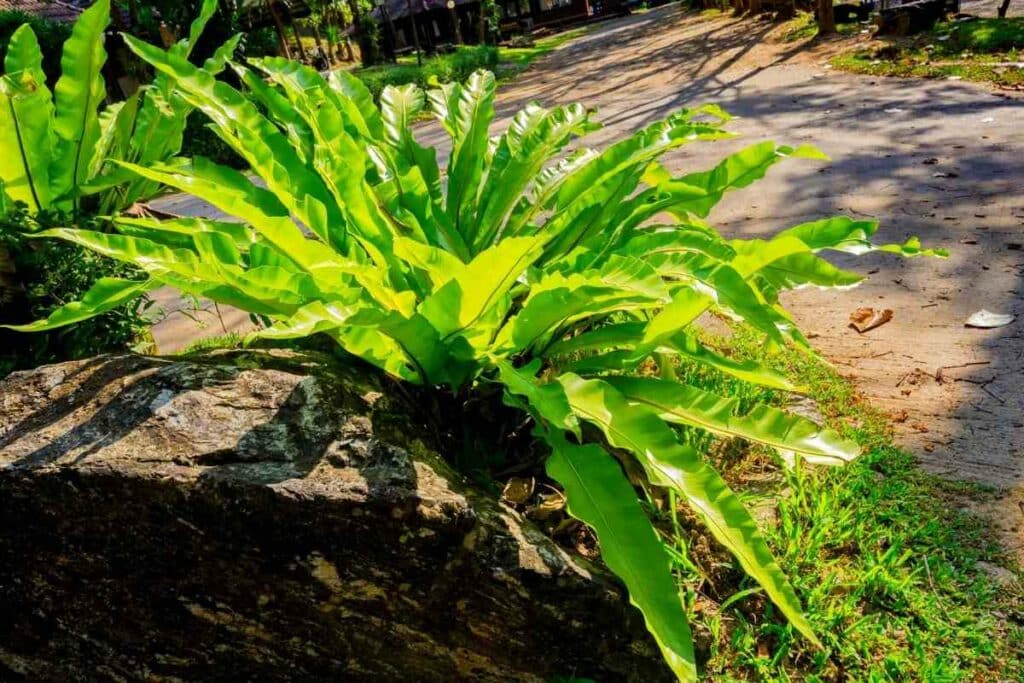
The effects of foliar nematodes deform and discolor the leaves of your fern, with browning of the leaf tips, and desiccated, dropping leaves.
How to tackle foliar nematodes on your bird’s nest fern
- No known controls: According to the RHS, there are no pesticides that will control foliar nematodes. This makes control difficult. The best approach to managing an infestation is to remove damaged foliage, and carefully dispose of infected plant material.
- Reduce moisture levels: Avoid surface moisture on the plant that could provide a means of migration for the nematodes.
- Dispose of an infected plant: if the plant deteriorates, it is better to dispose of it than risk it infecting your other houseplants.
5. Mealybugs
Mealybugs are a type of sap-sucking scale insect that form floury masses on your bird’s nest fern.
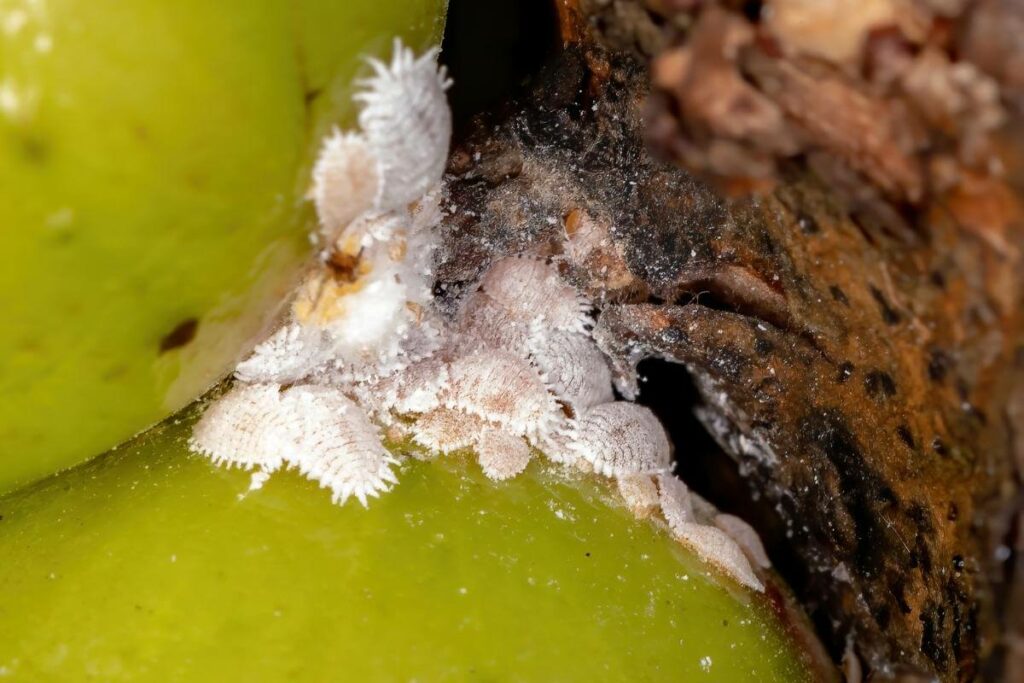
Their piercing-sucking mouthparts damage the fern’s leaves and the mealybug rob the plant of its juices, weakening it, stunting its growth, and causing yellowing of the leaves.
How to tackle mealybugs on your bird’s nest fern
- Topical agents: including rubbing alcohol, apple cider vinegar, and even hydrogen peroxide prove effective at eradicating these bugs.
- Essential oils: Neem oil, limonene, ginger, and garlic oil can deter mealy bugs. Simply spray down the plants with a solution of these oils regularly, to prevent their recurrence.
- Steam application: Direct application of steam to your fern can kill any mealy bugs present.
6. Fungus gnats
Warmth, humidity, and moisture create the perfect breeding ground for fungus gnats.
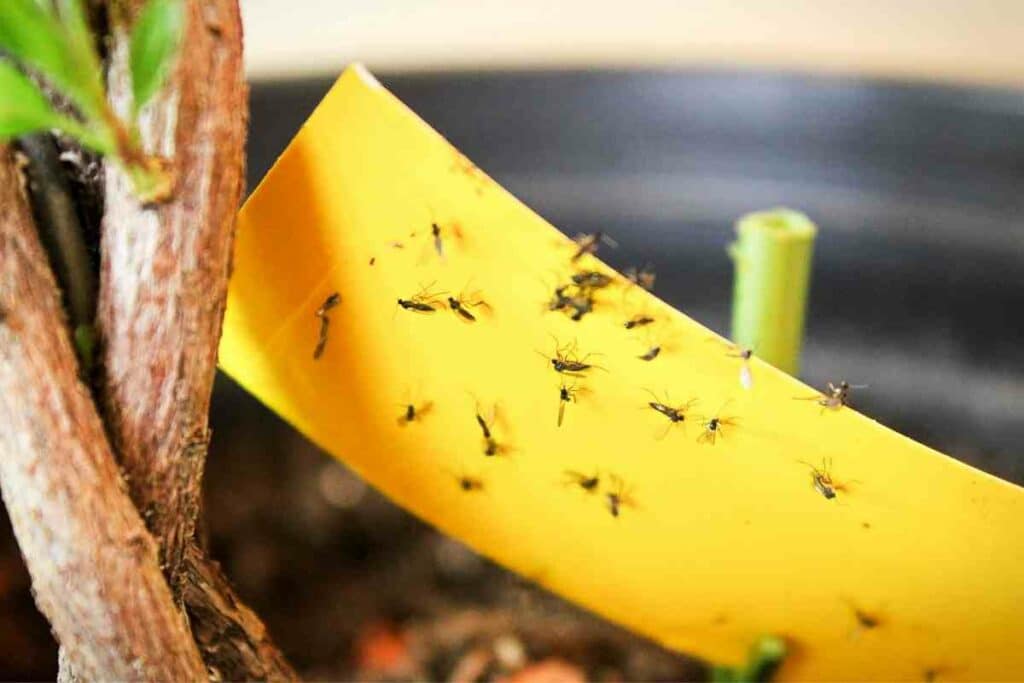
These midge-like flies damage the bird’s nest fern by laying their eggs on the fern’s soil which hatch into larvae that feed on the roots of the plant.
An infestation of mature fungus gnats is also a nuisance.
How to tackle fungus gnats on your bird’s nest fern
- Minimize the potential for breeding: to bring this pest under control, reduce your waterings and the level of humidity around the fern. Remove any potential breeding areas like dying plants or piles of rotting plant material.
- Biological control: Bacillus thuringiensis subsp. israeliensis (Bti) is an organism that will kill fungus gnat larvae. These bacteria are very targeted and won’t harm other organisms. This makes it ideal if you want to effectively manage this pest organically.
- Insecticides: fungus gnats can be killed by an insecticide that has larvacidal and insecticidal action.
7. Whiteflies
Whiteflies are another gnat-like insect that can infest your fern and weaken it by feeding on its sap.
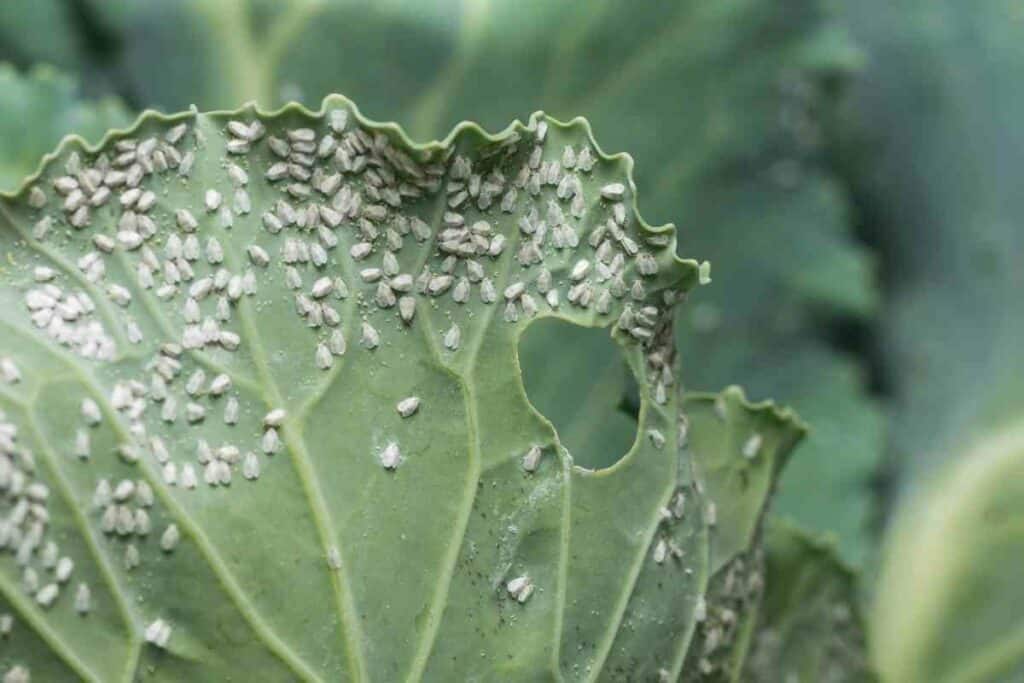
Signs of whitefly damage include curled and distorted leaves and a general loss of vigor and growth in your plant.
Leaves may yellowed or pale. You’ll find whitefly feeding on the underside of leaves or stems.
How to tackle whiteflies on your bird’s nest fern
- Non-pesticide strategies: these include the introduction of tiny parasitoid wasps and egg predators like the ladybug or Amblyseius andersonii.
- Sprays: including pyrethrum, fatty acids, and neem oil can also control whitefly infestation if they are applied repeatedly.
8. Bacterial leaf spot
This bacterial infection targets the beautiful foliage of your bird’s nest fern, where it weakens the plant by disrupting photosynthesis.
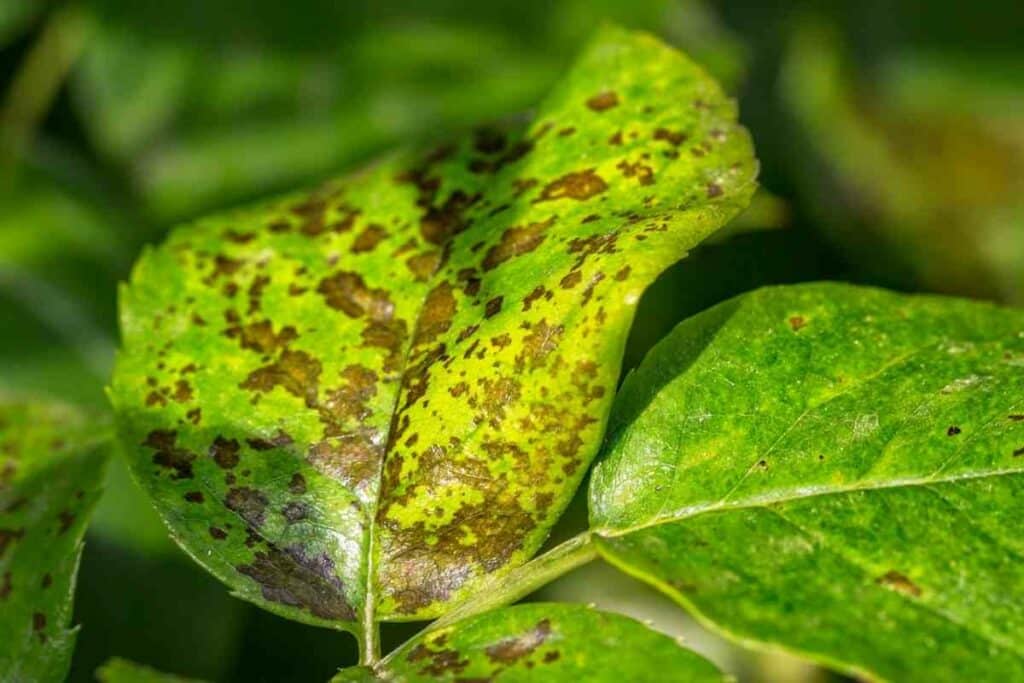
If only a small part of the leaf is infected, the condition may not be noticeable, but extensive infection can lead to stress, leaf loss, and infestation by pests or other infections.
How to tackle bacterial leaf spot on your bird’s nest fern
- Remove affected leaves: Dispose of the infected material carefully so other plants are not infected. Sanitize secateurs that you have used on an infected plant
- Reduce watering and mulch your plant: A reduction in humidity can help improve bacterial leaf spot.
9. Southern Blight
Southern blight is a fungal disease that affects tropical plants like the bird’s nest fern.
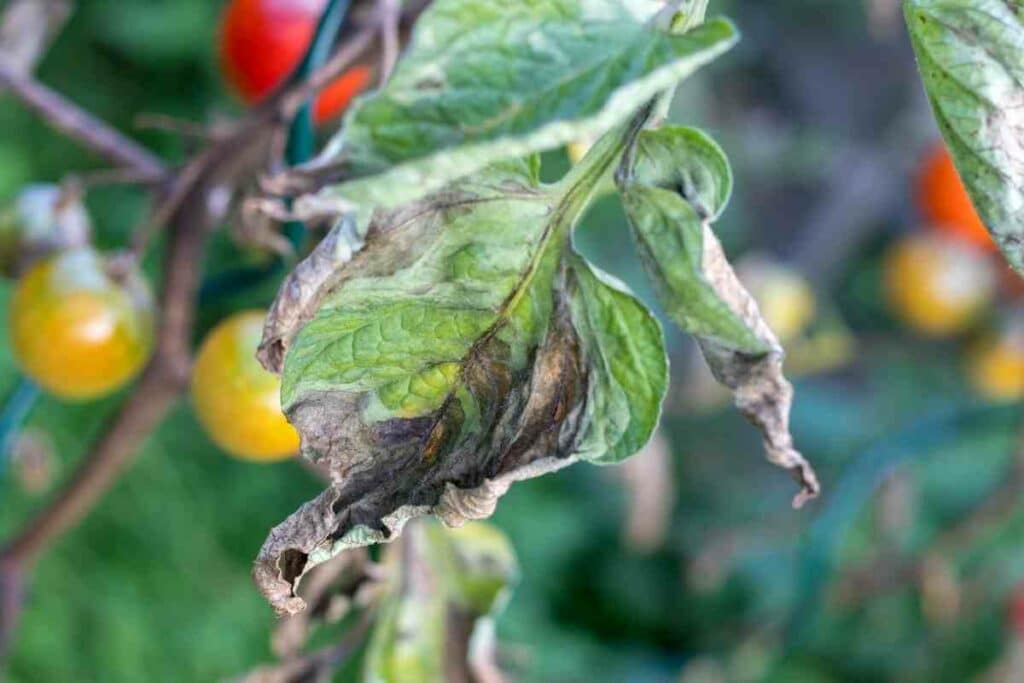
Like other forms of blight, it causes spots on the leaves and stems, along with white fungal threads and bumping of the foliage.
Southern blight progresses rapidly with yellowed wilting foliage, root rot, and the death of the plant.
How to tackle Southern blight on your bird’s nest fern
- Remove affected leaves and stems as soon as blight is detected: do not compost infected material as it could transmit the blight to other plants.
- Reduce humidity around your plant: You may have to cut down on watering and ensure that there is no surface moisture on the leaves of your fern.
10. Powdery Mildew
Warm, dry conditions can bring out a common fungal condition called powdery mildew.
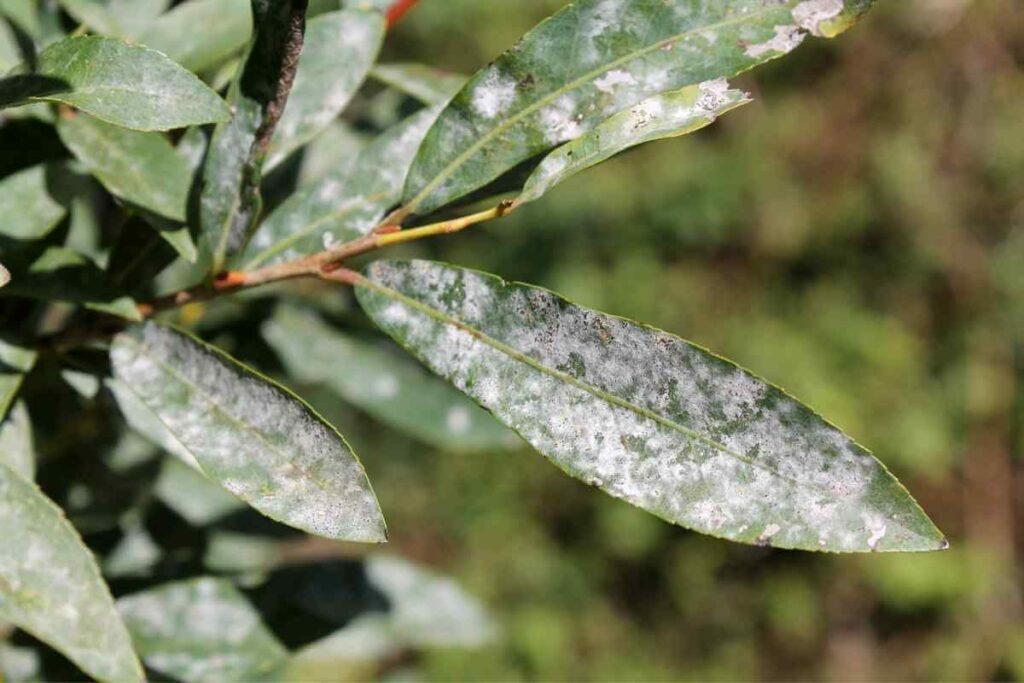
It can affect almost any plant, causing white or gray discoloration of the leaf, a powdery growth, and tiny black specks.
If you do not tackle powdery mildew, the lead becomes distorted yellowed, and eventually drops.
How to tackle powdery mildew on your bird’s nest fern
- Home remedies: like baking soda or milk spray may alleviate powdery mildew.
- Reduce crowding of your plants: also remove affected leaves and dispose of them carefully.
- Topical fungicides can also be applied to affected areas on the fern, though home remedies are often more effective.
TLC for your bird’s nest fern
The good health of your bird’s nest fern is its best protection against disease and pests.
Though this fern is easy to take care of, paying attention to its conditions can help to prevent common pests and fungal infections.
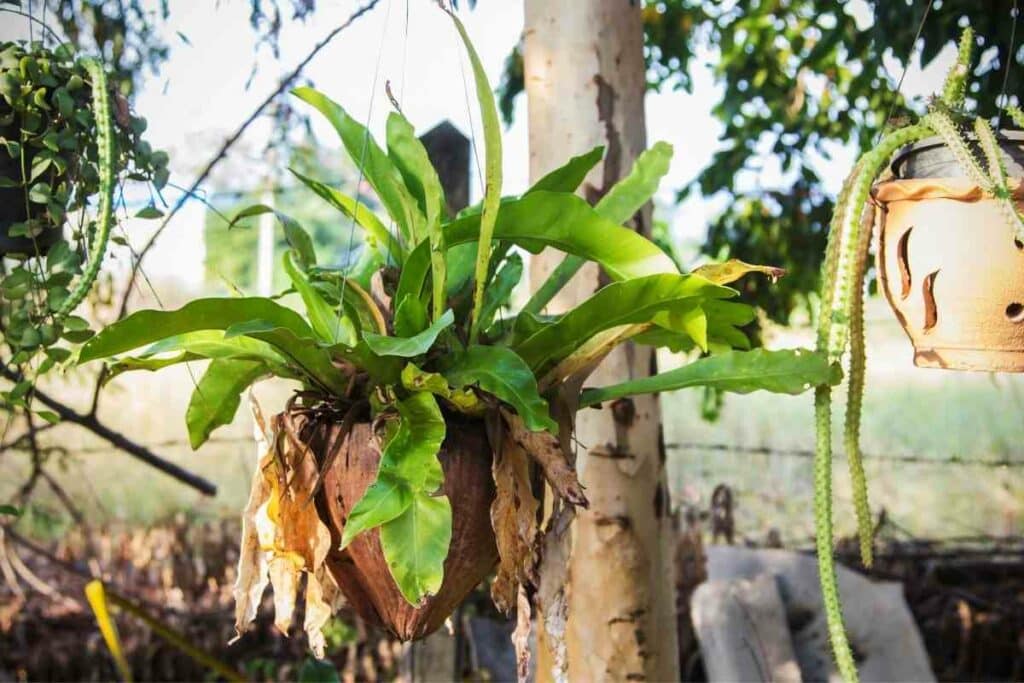
Here are some quick tips for keeping your bird’s nest fern in top shape:
- Take care with newly propagated plants. If you have a variety of mature plants nearby, quarantine a new fern, until it is fully established and strong.
- Use nutrient-rich, slightly acidic, and well-draining soil for your fern. It should be kept moist but not wet. Only water your bird’s nest fern when the top inch of soil dries out.
- Indirect sunlight is best for this fern with an indoor temperature maintained between 70 and 80 degrees Fahrenheit (21 to 26 degrees Celsius). If you are in zone 11 or 12, you should find that your fern can grow extremely large outside.
- These ferns only need to be fed once per month with a dilute water-soluble feed during the spring and summer. Overfeeding can precipitate disease.
- Be proactive about pruning the fronds of your bird’s nest fern. This removes old and damaged foliage that could introduce disease and promotes new growth.
- Also, change the soil by repotting your fern every two years.
- If your bird’s nest fern does suffer infestation or disease start with the least invasive treatments and persist with them. Most problems clear up with essential oils like Neem or garlic or insecticidal soap.
Rounding up
Bird’s nest ferns are delightful hardy plants that are usually problem free.
If your fern develops problems, the key is recognizing the pest or condition early and providing timely and consistent treatment.
For most plant owners, maintaining optimal conditions for this plant should prevent problems.
